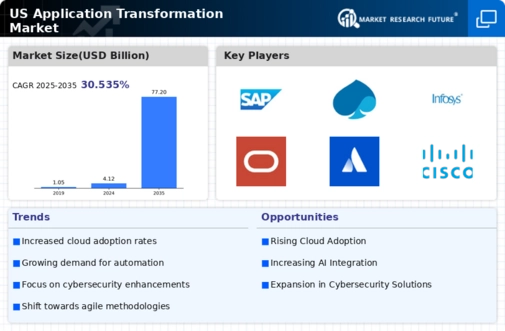The US Application Transformation Market is currently characterized by a dynamic landscape where companies are increasingly adopting cloud-based and integrated solutions to streamline their IT infrastructures and enhance operational efficiencies. This transformation is particularly crucial as organizations seek to remain competitive in an era defined by digital disruption. With various players in the market providing innovative solutions ranging from application modernization to digital migration, the competition is heavily influenced by the capabilities to deliver customizable and scalable applications.
Additionally, as businesses pivot towards enhancing customer experiences and optimizing their operations through advanced technologies, the demand for sophisticated application transformation strategies is on the rise, prompting numerous firms to invest in research and development to stay ahead of market trends.
In this context, SAP has established a prominent presence in the US Application Transformation Market, leveraging its robust cloud solutions and a comprehensive suite of applications tailored for enterprises of different sizes. SAP's strength lies in its deep integration capabilities, enabling organizations to seamlessly migrate their legacy systems to modern architectures while maintaining operational continuity. The company's extensive ecosystem of partners and a strong focus on customer success have further bolstered its position, allowing for flexible deployment models that cater to diverse client needs.
SAP continues to innovate with regular updates and enhancements focused on industry-specific solutions, positioning itself as a trusted ally for businesses looking to optimize their application portfolios.
Capgemini has also carved out a significant niche in the US Application Transformation Market by offering a diverse range of services tailored to help organizations navigate their digital transformation journeys. The company’s key offerings include cloud migration, application modernization, and intelligent automation, all aimed at enhancing operational agility. Capgemini’s market presence is enhanced through strategic partnerships with major technology providers, enabling it to deliver cutting-edge solutions aligned with current market demands. The company's strengths are evident in its consultative approach to understanding client needs, which allows it to develop tailored strategies that facilitate effective application transformations.
Moreover, Capgemini has engaged in several strategic mergers and acquisitions, enhancing its capabilities and expanding its market footprint within the US, thereby positioning it to compete effectively against other major players.
























Leave a Comment